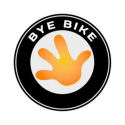

Notes on some of the rarer Spanish marques
This page lists brands for which we currently have only an historical precis. For a more complete listing visit the Spanish Index.
Badia
Competition machines built by motorcycle racer Vicenç Badía of Barcelona using a Soriano engine from 1949 to 1951.
In 1961 he built a Montesa-powered three-wheeled microcar. The pilot was seated to the left and somewhat ahead of the passenger, in the same fashion as some motor-gliders of the era.
Sources: wikipedia.es, autopasion18.
Barbacil 1930-1958
Batlló
Built in Barcelona during the 1960s and 70s, these were competition motorcycles and engines based on the Derbi 74GS and OSSA 250cc.
Source: wikipedia.es
Belfi 1955-1960
Beneti
Motos del Sureste of El Palmar, Murcia (Motomur) reached an agreement in the mid-1970s with the Gimbernat brothers to take over manufacture of their Gimson mopeds. These were produced under the Beneti brand, and then were once more sold as Gimson.
Source: Wikipedia
Bety
This was a rebranded Fénix moped fitted with a 48cc Iresa engine. It was marketed by a firm in Eibar from 1949 to 1950.
It is unrelated to the Betty from Doubs, France.
Source: OTTW
BH 1956-1960
Bibiloni
Founded in Palma de Mallorca in 1906, A. Bibiloni SA was involved in many aspects of the automotive industry. From 1952 to 1960 they built mopeds with Cucciolo 48cc OHV engines, and later employed Mosquito cyclemotors. Some 1500 to 2000 machines were built.
Source: OTTW
B.J.R. 1953~1964
Blanco
This was a single-cylinder 500cc motorcycle raced by Francisco Blanco. In 1926 he competed in the "Cuesta de las Perdices", achieving second place at an average speed of 75.27 km/h behind the Douglas of Federico Salgado.
Source: OTTW

Blitz
Established in 1965 by Spanish champion Miguel Escobosa, Moto Blitz of Barcelona built modified Montesa Impala 250 and Enduro 360 machines. The company is still active.
Source: OTTW
Boar 1962-1964
Bonet
Francesc Bonet built Spain's first vehicle powered by an internal combustion engine in 1899. Constructed in his textile factory in Barcelona, the tadpole style tricycle accomodated four people in wicker seats.
It was powered by a single-cylinder Daimler engine with belt drive to the rear wheels. Two replicas of the tricycle have been built, one of which is in a Spanish museum.
Source: OTTW
Bordoy
Manufactured in Palma, Mallorca, in 1950, it was a powered bicycle using a Mosquito 50cc engine.
Source: inmediatika.webnode.es/products/motos/
Bresson
Eugeni Bresson of Barcelona obtained patents after presenting a study in 1901 on "Locomotion machines on ordinary roads powered by a steam boiler" ("Máquinas de locomoción en carreteras ordinarias movidas por caldera de vapor de agua"), which was to be mounted on a motorcycle. It is not known whether the project was completed.
Source: OTTW
Bruna
Isidro Bruna, of Chopa Street in Madrid, manufactured an auxiliary engine which was presented at the Iª Exposición Nacional de Inventores de Madrid in 1952.
The machine was fitted with a single-cylinder 75cc two-stroke with a Fiat Topolino piston. It had four gears controlled from the twist grip on the handlebar, automatic clutch, and had a claimed maximum speed of 75 km/h. The engine was of the "floating" style, suspended for better performance on rough roads.
Sources: OTTW.
BT
Manufactured in Sitges, Barcelona in 1923, the competition machine is thought to have been powered by a 123cc 1.25 h.p. Train two-stroke engine.
That year the constructor competed in the 2nd Carrera en Cuesta de La Rabassada, achieving a record at an average of 38.60 km/h. In 1926, at the Autódromo de Terramar he qualified first in the 125cc category and third in the 150 class.
Source: OTTW.
Burma 1956
Busato
Manufactured by Talleres Mecánicos de Precision Busato SA., of Munguía, Vizcaya province.
In 1949 the firm built an auxiliary engine which was attached below the pedal crank of any bicycle, delivering power to the rear wheel via the same chain that is normally used for pedaling.
The engine was a single cylinder 33.67cc two-stroke delivering 0.6 h.p. at5,000 rpm. The decompressor lever and throttle control were mounted on the handlebars. Fuel consumption was stated to be 1.5 L/100 km, with a maximum speed of 35 km/h.
Source: OTTW

Bye Bike
Marketed by Tecnigas of Girona, well-known as a manufacturer of exhausts and accessories for motorcycles.
These are Rieju-based mopeds with a central frame to which the engine is anchored in the lower part, telescopic forks, dual rear shock absorbers, 17-inch wheels and drum brakes. Said to be available with and without pedals.
Engine is an air-cooled two-stroke with electric start.
Sources: motorpasionmoto.com, mopedarmy.com, et al.
If you have a query about these vintage Spanish motos please contact us